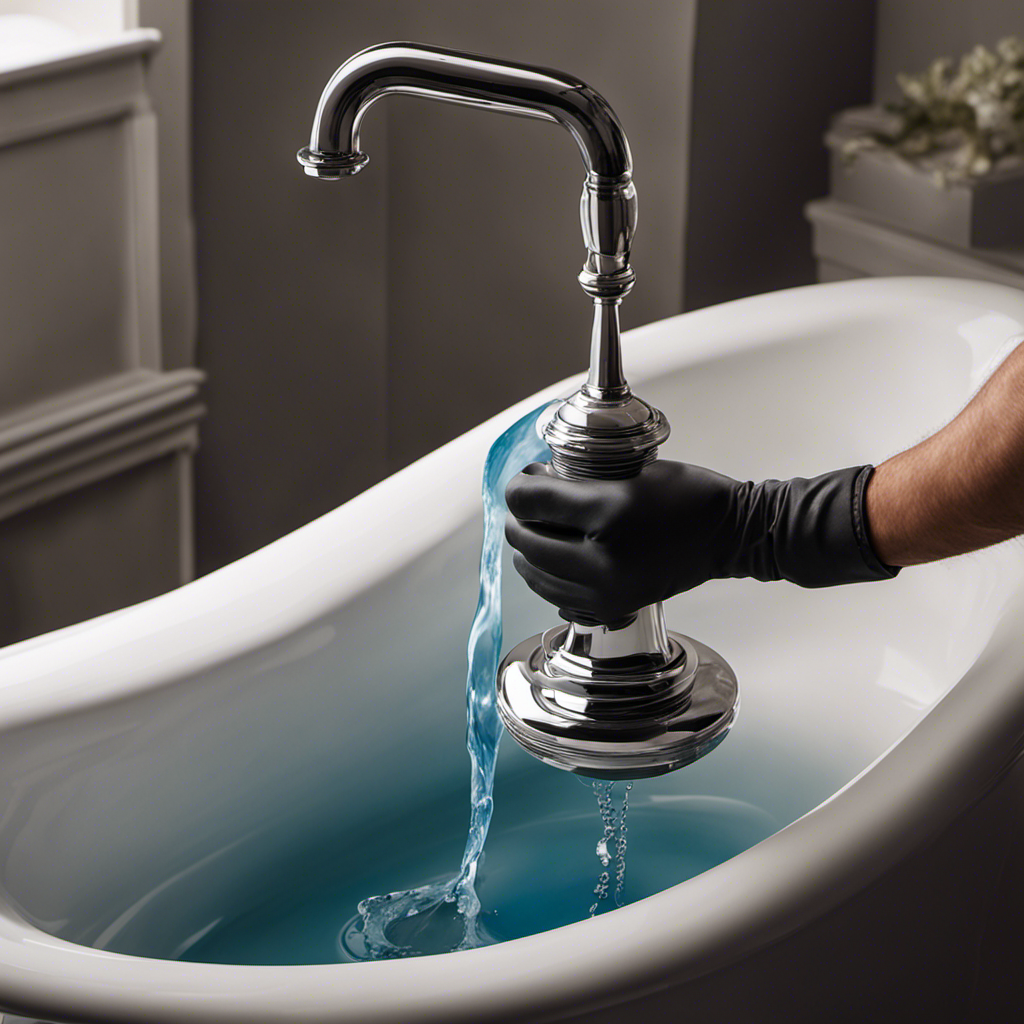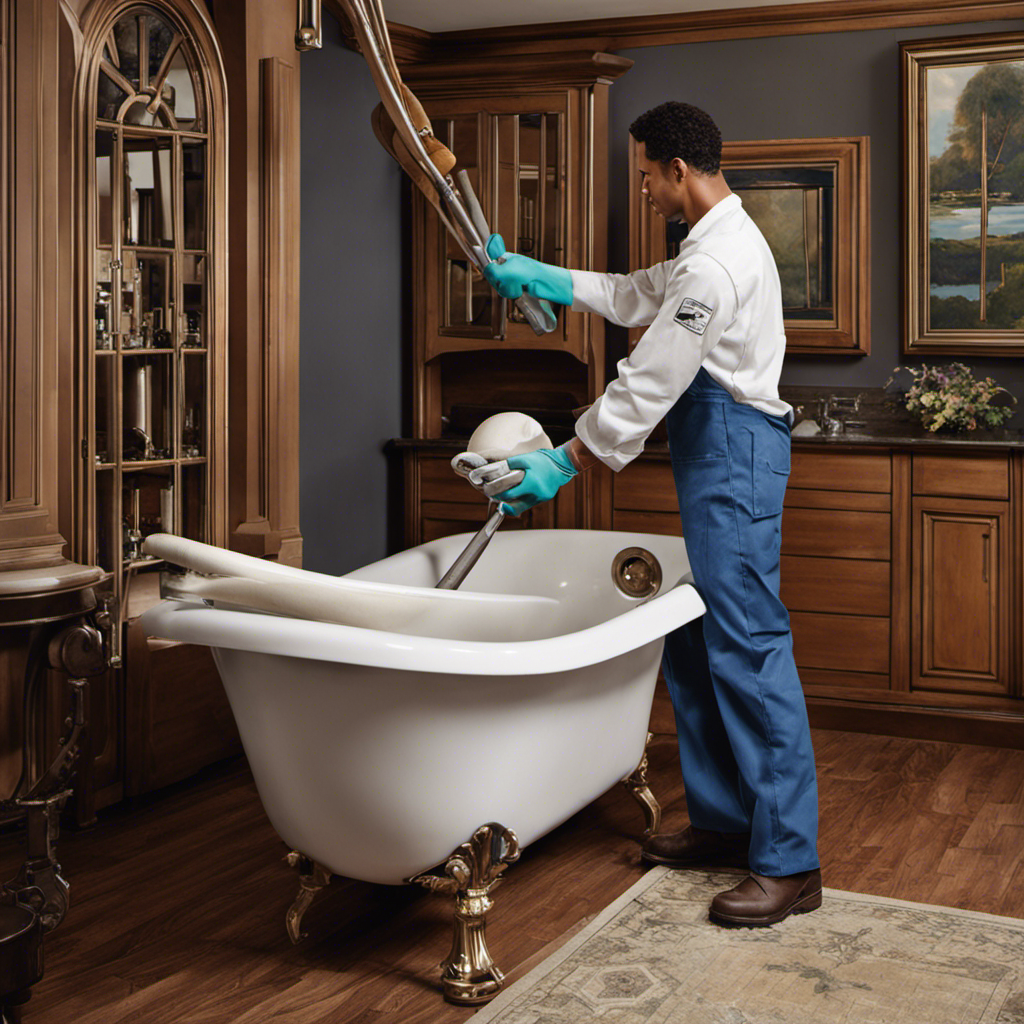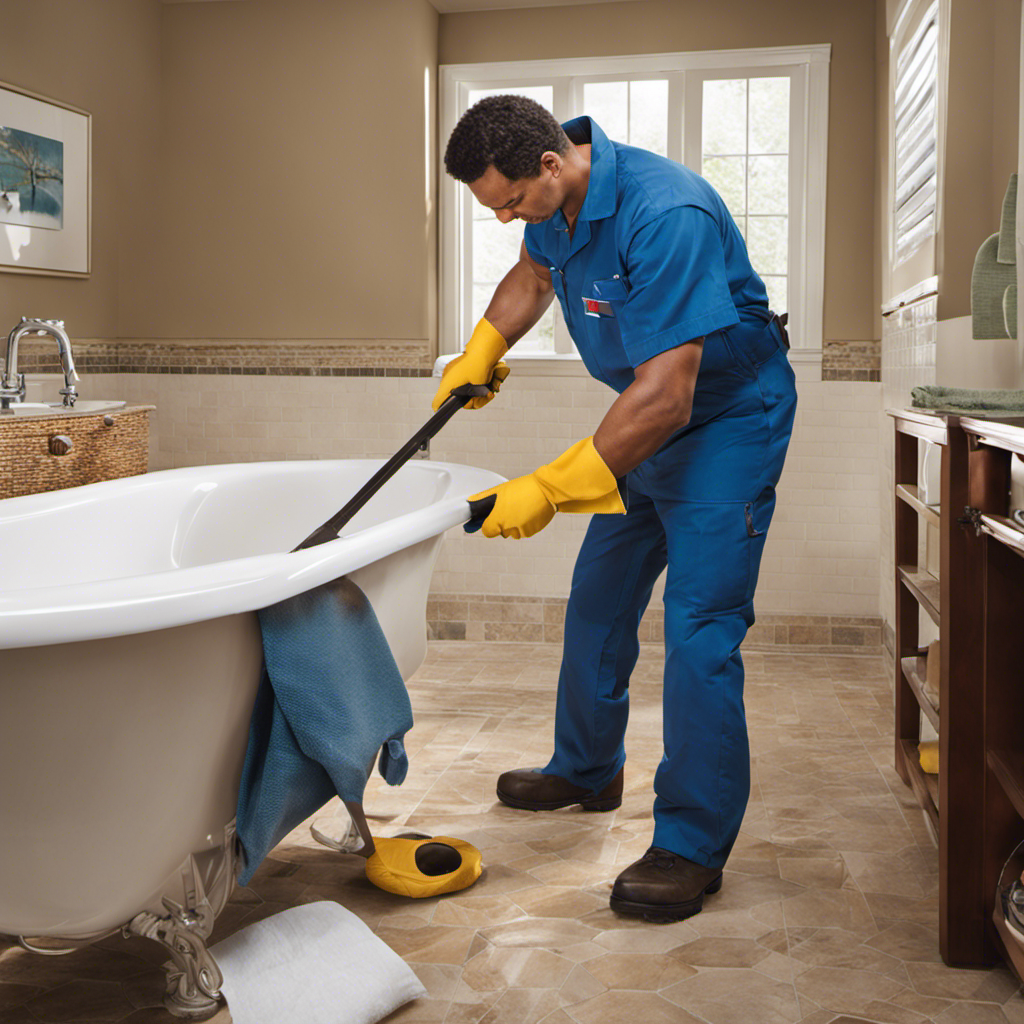Have you ever wondered why toilets don’t flush properly? Well, we’ve got the answers you’ve been searching for.
In this article, we’ll delve into the common reasons behind this frustrating issue. From clogged pipes to faulty flushing mechanisms, we’ll explore the technicalities and provide you with concise, informative explanations.
So, buckle up and get ready to master the art of toilet troubleshooting.
Let’s dive in and uncover the mysteries of why toilets don’t flush properly.

Key Takeaways
- Regular cleaning and maintenance can prevent clogs in pipes or drains.
- Understanding common causes of faulty flushing mechanisms can help troubleshoot and fix the issue.
- Checking and adjusting the water level in the tank is essential for proper flushing.
- Regular plumbing maintenance helps maintain adequate water pressure and prevents issues with the toilet’s trap or venting system.
Clogged Pipes or Drain
When facing a clogged toilet, one of the most common culprits is a blockage in the pipes or drain. Toilet maintenance is crucial in preventing this issue. Over time, debris such as toilet paper, hair, or foreign objects can accumulate and obstruct the flow of water. It’s essential to be mindful of what gets flushed down the toilet and to avoid flushing items that don’t belong.
To prevent clogged pipes or drains, regular cleaning and maintenance should be performed. This can include using a plunger or a drain snake to clear any blockages. Additionally, implementing proper waste disposal habits can significantly reduce the likelihood of encountering this common household plumbing issue.
Now, let’s explore another potential cause of toilets not flushing properly: the faulty flushing mechanism.
Faulty Flushing Mechanism
To continue our discussion on why toilets don’t flush properly, another common issue that can cause this problem is a faulty flushing mechanism. The flushing mechanism is responsible for initiating the flow of water from the tank into the toilet bowl, allowing for a successful flush. One component of the flushing mechanism that can malfunction is the flapper valve. The flapper valve is a rubber seal that covers the opening between the tank and the toilet bowl. When the flush lever is pressed, it lifts the flapper valve, allowing water to rush into the bowl and create the necessary force to remove waste. However, if the flapper valve is worn out or misaligned, it may not seal properly, leading to a weak or incomplete flush.
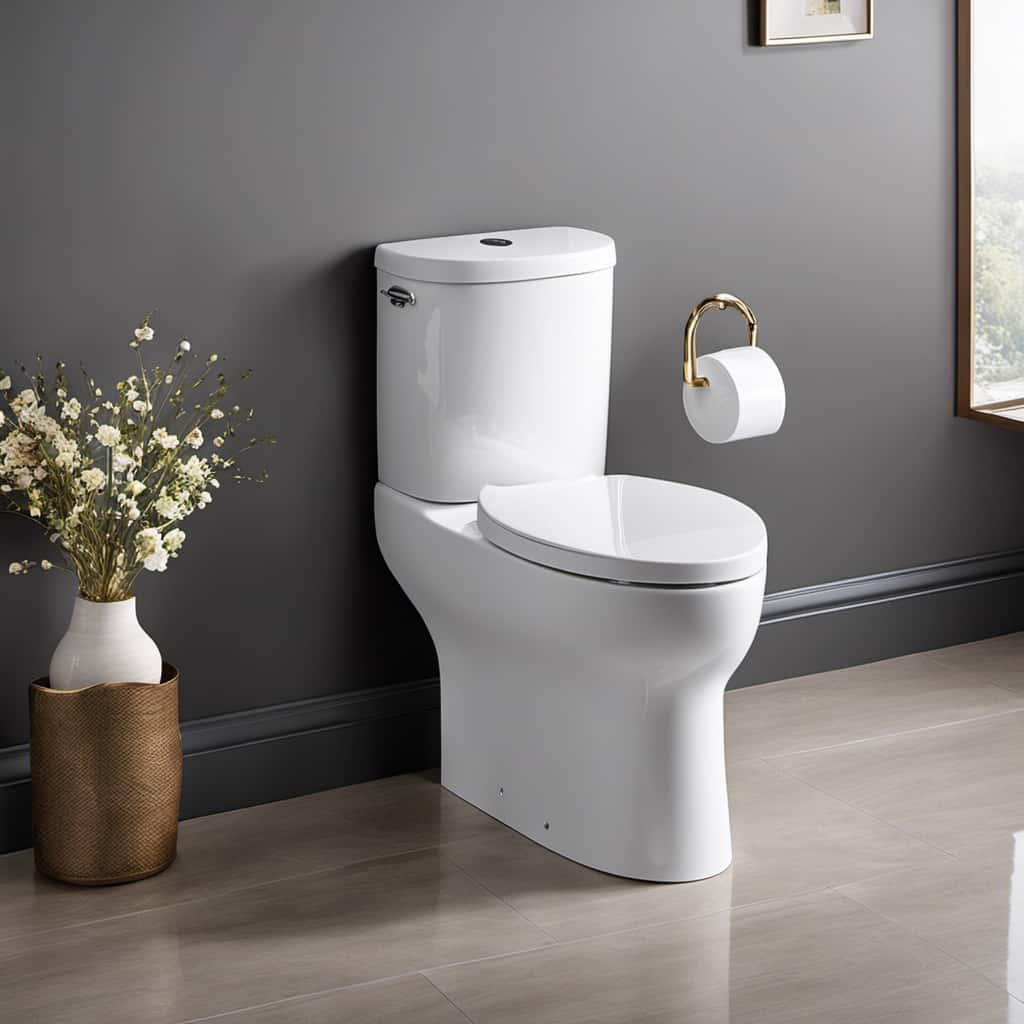
| Common Causes of Faulty Flushing Mechanism | |||
|---|---|---|---|
| Worn-out flapper valve | Misaligned flapper valve | Broken flush lever | Damaged flushing mechanism |
Understanding the common causes of a faulty flushing mechanism can help troubleshoot and fix the problem. However, it is important to note that a faulty flushing mechanism is not the only issue that can affect the flushing performance of a toilet. Another potential cause is a low water level in the tank, which we will discuss in the next section.
Low Water Level in the Tank
Continuing our discussion on why toilets don’t flush properly, one common issue that can contribute to this problem is a low water level in the tank.
Water conservation measures, such as low-flow toilets, have become increasingly popular due to their positive impact on the environment and water consumption. However, these measures often result in a reduced water level in the tank, which can affect the flushing performance.
To efficiently increase the water level in the toilet tank, there are a few steps you can take. First, check the water supply valve to ensure it’s fully open.

Next, adjust the float valve or fill valve to allow more water into the tank.
Additionally, consider installing a toilet tank bag or displacement device to displace water and increase the water level.
Insufficient Water Pressure
One common reason toilets don’t flush properly is due to a lack of sufficient water pressure. When there’s restricted water supply or issues with plumbing maintenance, the water pressure in the toilet tank may be inadequate, leading to ineffective flushing. Here are four key points to consider:
- Inspect the water supply valve: Ensure that the valve supplying water to the toilet is fully open. Partially closed valves can restrict water flow, leading to low pressure.
- Check the water pressure regulator: In some cases, a faulty or improperly adjusted water pressure regulator can result in insufficient water pressure. Have a professional plumber inspect and adjust the regulator if necessary.
- Remove any blockages: Obstructions in the water supply line can restrict the flow of water, causing low pressure. Regularly inspect and clear any debris or blockages in the pipes.
- Maintain the plumbing system: Regular plumbing maintenance, including checking for leaks and ensuring proper pipe insulation, can help maintain optimal water pressure for flushing.
Issues With the Toilet’s Trap or Venting System
There are two common issues that can cause toilets to not flush properly: a malfunctioning trap or a problem with the venting system. The trap is a U-shaped pipe located beneath the toilet bowl that prevents sewer gases from entering the bathroom. If the trap is not properly installed or is damaged, it can lead to poor flushing performance. On the other hand, the venting system plays a crucial role in maintaining proper air pressure and flow within the plumbing system. Building code violations or improper toilet installation can result in inadequate venting, causing the toilet to flush weakly or not at all. To better understand these issues, let’s take a look at the table below:
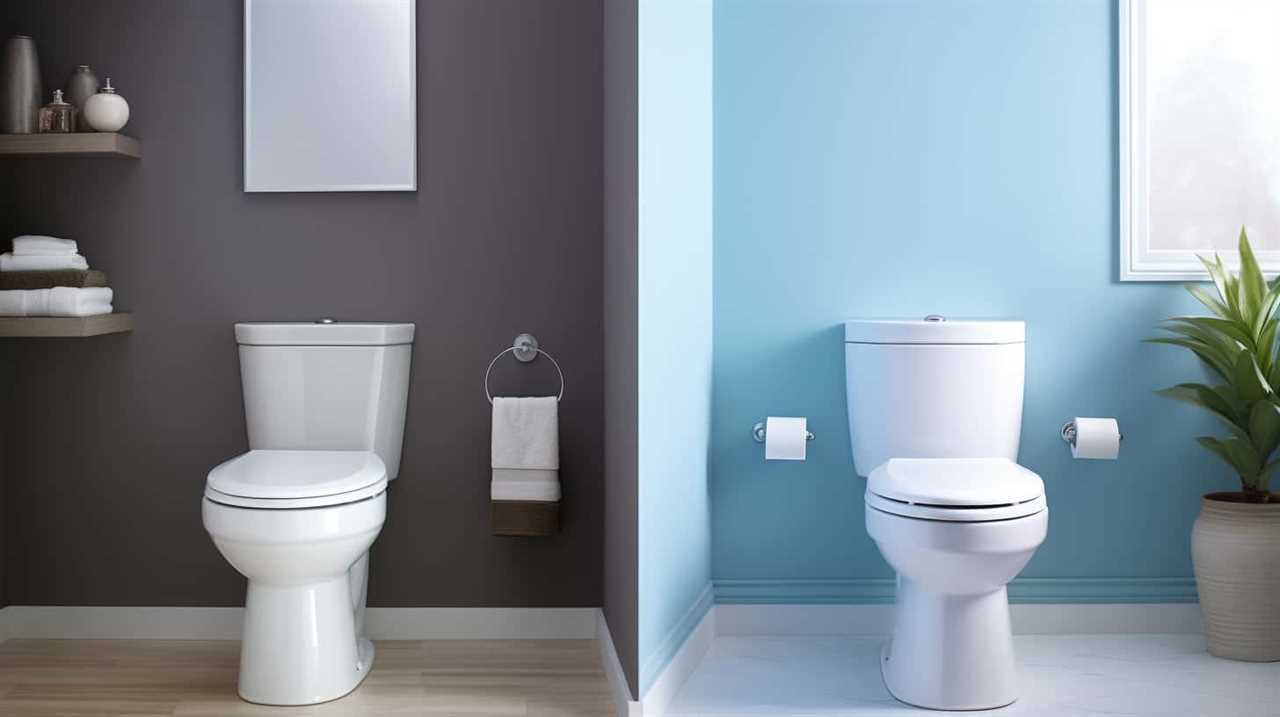
| Issue | Cause | Result |
|---|---|---|
| Malfunctioning Trap | Improper installation or damage to the trap | Poor flushing performance |
| Problem with Venting System | Building code violations or improper installation | Weak or no flushing action due to air pressure |
To ensure a properly functioning toilet, it is essential to address these issues promptly and adhere to proper installation guidelines and building codes.
Frequently Asked Questions
How Can I Prevent Clogged Pipes or Drains in My Toilet?
To prevent clogged pipes or drains in our toilet, we can take certain measures. Regularly cleaning the toilet, avoiding flushing non-flushable items, and using a plunger when needed are important for maintaining toilet drainage and preventing toilet clogs.
What Are the Signs of a Faulty Flushing Mechanism in a Toilet?
Common reasons for a weak toilet flush include a faulty flushing mechanism. To troubleshoot a toilet that won’t flush properly, check for clogs, inspect the flapper, adjust water level, or replace the flush valve.
How Can I Increase the Water Level in the Tank of My Toilet?
To increase water levels in the toilet tank, regular toilet tank maintenance is necessary. This includes checking the fill valve, adjusting the water level, and ensuring proper water flow.
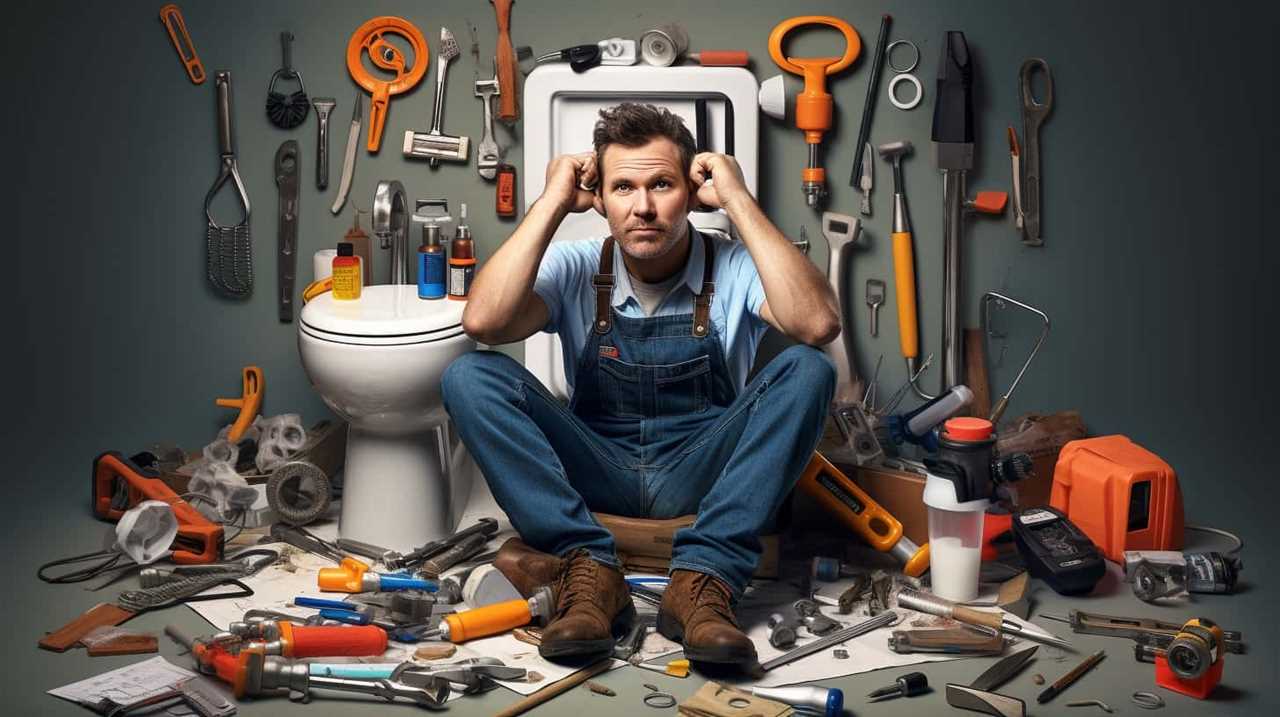
What Are Some Common Causes of Insufficient Water Pressure in a Toilet?
Common causes of low water pressure in toilets include clogged pipes, faulty fill valves, and insufficient water supply. To troubleshoot and fix this issue, check for blockages, adjust the fill valve, and ensure proper water flow.
How Can I Identify and Fix Issues With the Toilet’s Trap or Venting System?
To identify and fix issues with the toilet’s trap or venting system, we must first understand the signs of a blockage and then troubleshoot the flushing mechanism accordingly.
Conclusion
In conclusion, when it comes to toilets that don’t flush properly, there can be various causes such as:
- Clogged pipes
- Faulty flushing mechanisms
- Low water levels in the tank
- Insufficient water pressure
- Issues with the toilet’s trap or venting system
These problems can leave us feeling frustrated and helpless, like we’re stuck in a stagnant pool.
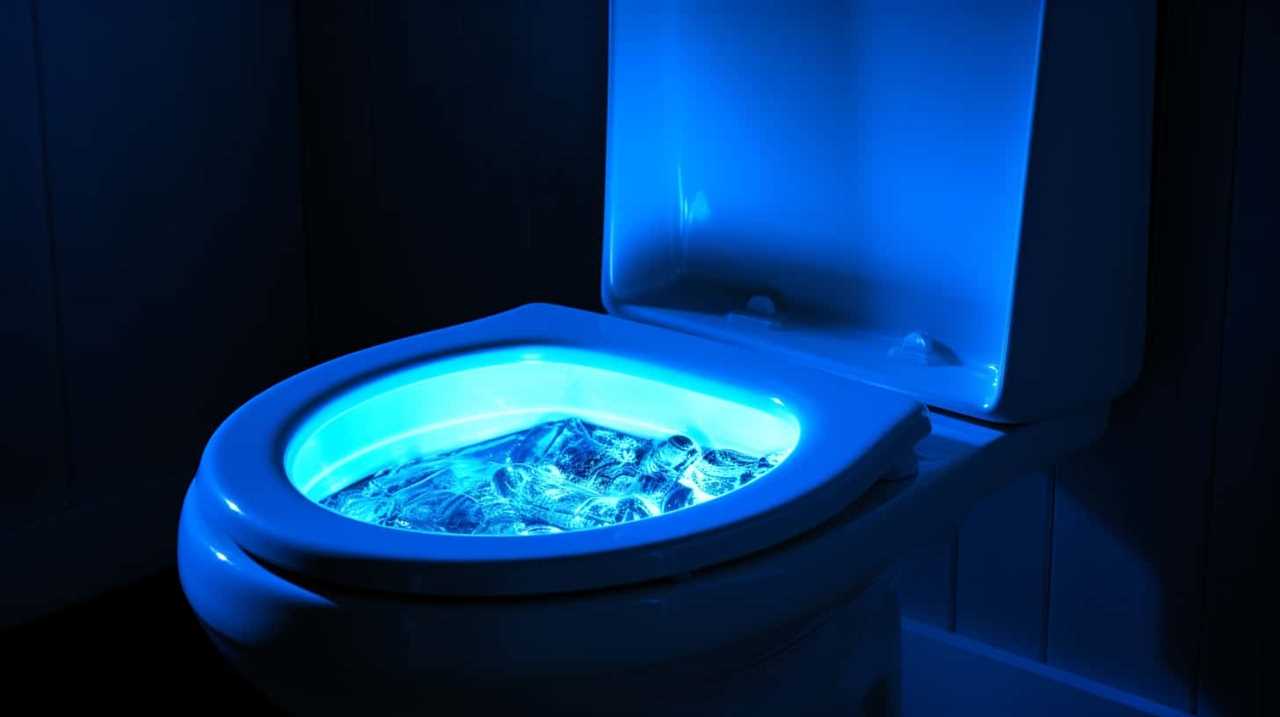
But fear not, with proper maintenance and troubleshooting, we can unclog the blockages and restore the flow, ensuring a smooth and satisfying flush every time.



